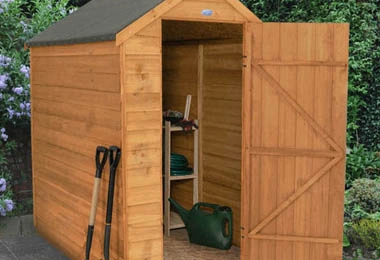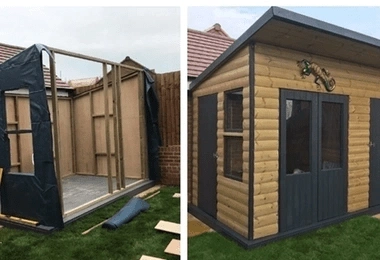Frequently Asked Questions
Will I need planning permission for my garden building?
Garden Timber Buildings are permitted without the need for planning permission provided they follow a range of conditions, including: It must be single-storey with a maximum overall height of four metres if the building has a dual pitched roof. Any other roof type can have a maximum overall height of three metres. The eaves of the building cannot be any more than 2.5 metres in height. The building cannot include a balcony, veranda or raised platform. Less than half of the available land surrounding the property can be filled with outbuildings.
What type of wood are log cabins made from?
Howarth provide a wide range of sheds from Forest Garden and are made from Treated Timber. Treated timber is a reliable material as it is very strong and durable.
What is the best preserver for log cabins?
At Howarth, our best log cabins preserver is the Ronseal 5 litre clear total wood preserver. If you are wanting to browse through the range of wood preserves online, you can access them via our website in the wood care category under tools and finishes.
How close can a shed be to a fence?
It needs to sit at least two metres from the boundary of a property, such as a fence or a wall.
How much does it cost for a shed base?
The cost of a shed base depends on the size of the shed and the type of concrete, but it usually costs anywhere between £300-£500.
Should a shed base be bigger than a shed?
Yes, the base should be built bigger than your shed. On each product page, the shed base dimensions can be seen on the ‘dimensions’ tab. These dimensions are the recommended size that your shed base should be built to. It should also be a minimum of 50mm/2” inch. However, if you are planning on installing a ground anchor, your shed base should be a minimum of 100mm/4” thick.
Do I need a base for my shed?
A good solid and level base is always required for a shed.
What type of garden shed is best?
You can have a range of different materials for sheds, such as wooden, plastic and metal. Wood is the traditional type of shed and is very versatile. You can paint, stain, or treat your wooden shed to reflect or contrast with its surroundings. However, it requires a lot of upkeep, as wood will rot if it isn’t adequately protected. As for plastic sheds, they require little to no maintenance. While you cannot change the colour yourself, they are available in a wide range of colours such as natural, green, or brown. At Howarth, we supply Albany and forest green garden sheds, which are some of our bestselling garden sheds due to how durable they are. Our Norfolk Albany shed is our most recommended, with plenty of room inside for storing gardening equipment.
What are the sheds treated with?
We apply a foundation layer of water-based Brown treatment where treatment is required.
Will my shed come with felt?
Yes, we provide felt, glass, fixings, trimmings, and other components as required.
Can you assemble my shed?
As a merchant, we can offer assembly service.
What do I need to put the shed on to?
To support the shed floor, you'll need a sturdy, flat, level base.
How often do I have to treat my shed?
If the shed was factory treated, we recommend re-treating it within 6 months and then yearly after that. If left untreated, it must be treated as soon as possible. Some models' hardwood doors and windows should be treated as soon as possible with a high-quality solution, such as a Sadolin product.
What should I use to treat my shed?
As previously stated, Sadolin provides certain high-quality materials that we recommend for wooden doors and windows but may also be used throughout the shed. We do not recommend clear therapy.
Can you make a shed to my requirements?
Some models are customisable. We've included information on various choices on each product page, but if you don't find what you're looking for, you may contact us to discuss some options, or you can construct your own using the Shed Designer. We are unable to provide made-to-order unusually shaped constructions.


